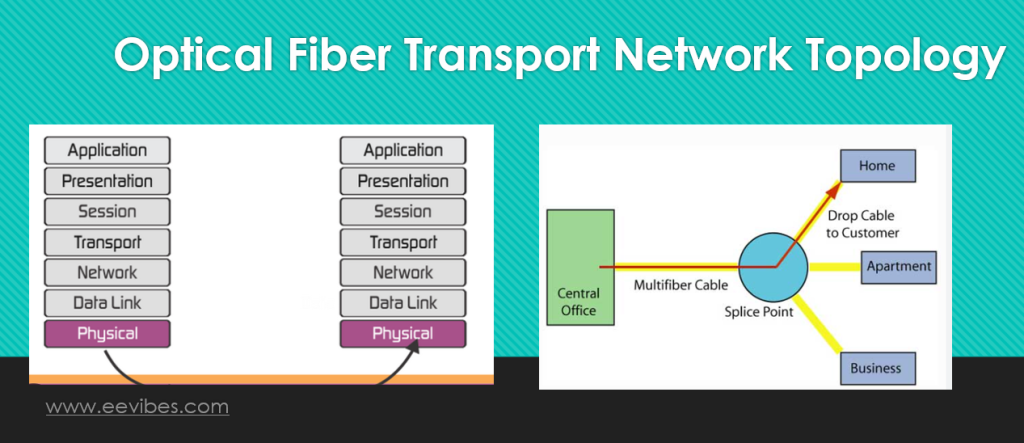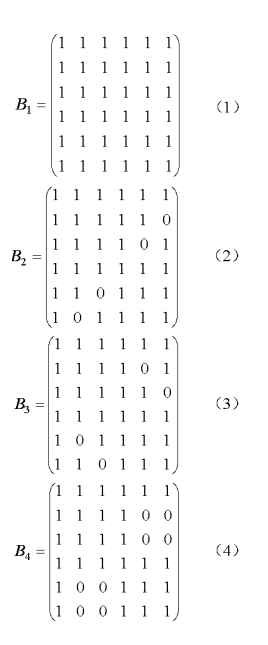
Introduction
Optical Fiber Transport Network Topology. The development of smart power grids in the United States, Europe, and China underscores the need for efficient optimization of the power optical fiber transmission network topology. This optimization is crucial to ensure the smart power grid’s core services such as reliability, real-time performance, connectivity, and cost-effectiveness.
To address these requirements, this study employs a combination of analysis and evaluation methods, considering factors like availability, optical path protection, resource utilization efficiency, and overall network connectivity.
The research focuses on optimizing the optical fiber transport network topology for carrying essential services in smart power grids. Using a six-node network topology as an example, the study explores various aspects, including normal optimal topology characterized by nested linear and ring topologies. It identifies that the optimal topology for achieving high connectivity and reliability is a ring topology within a mesh network.
The findings, methodologies, and results presented in this research offer valuable guidance for the optimization of electric power optical fiber transport network topology, ensuring it aligns with the requirements of smart grid core services.
The advancement of technology, the economy, and the growing gravity of global energy and environmental challenges has presented grid development with additional difficulties. Consequently the promotion of smart grid technology, grounded in current knowledge. Technologies for control and communication have emerged as a tenable resolution for the global power structure.
A robust and intelligent grid relies on a robust grid network. Backed by a platform for communication and information, including intelligent management of the power system’s components, including creation, transfer, dissemination, client support, and power dispatch, which includes every voltage range.
It is a combining information flow, work flow, and power flow in a robust, dependable, cost-effective, efficient, tidy, and dynamic electricity grid of today. The principal enterprises of the smart grid, like relay automatic gadget for security, stability, and protection, automated dispatching company, assume management of smart grid operations.
The main operations of the electric power communication channel are core services, which call for quick response times and high real-time functionality, quick protection and reorganization, compact bit error rate, great dependability, and excellent economics and connectedness. Currently, China’s electrical power transmission network has been the majority of optical fiber networks, with topology primarily rings and chains.
China’s electricity transmission network is among the biggest power communication network in the world, has finished covering the counties, cities, and provinces.
How to focus on the essential business needs of intelligent grid, optimizing the architecture of optical fiber transport networks is there is an urgent need to build a robust and intelligent grid with Chinese traits.
Methodology
Topology optimization makes use of connected matrix and connected topology graphics. An instance of a six-node network would be A/B/C/D/E/F, where A is the source and D is the destination. Figure 1 shows the complete mesh connection diagram, connecting matrix is B1, the best network connectivity and dependability nonetheless, economy and utilization are low, and protective mechanisms while healing is intricate, the period of safeguarding and healing is challenging to condense.
Simplify the topology of the link, remove two of the link path, obtain the connected graph path, refer to figure 2, and B2 and B3 are the linking matrices, and complexity is simplified, but not sufficiently. Topology further simplified, connected graph obtained, see source node and the linking matrix in figure 4 are B4. Five optical paths make up the destination node; the remaining there are three optical the degree of complexity and connectedness were balanced.
Topology further simplified, connected graph obtained, see Figure 5 shows the source node, connection matrix, and destination node has five optical directions, allowing it to guide the two optical pathways make up the remaining nodes.
Although network topology can be thought of as double-ring network topology in a chain. Additional topological simplification yields a linked graph (see Figures 6 and 7 show the B7 and B6 connected graph matrices. Ring topologies do not meet the requirements of the “N – 3” smart grid. Prerequisite.

A communication network can be fixed, meaning it can be used again and again with the availability of maintainability and reliability measures. As stated by the table 1, where analysis and evaluation are available Reflect light shielding for the whole network, utilizable optical path-protect-rate study of network elements and assessment.
R = (n1/n) 100%
Where: R is the optical path-protect-rate of a network element. The genuine optical path protection network number, or n1, is component. There are n total network elements. The following defines the use efficiency indexes for all network resources.

Where: E is the overall efficiency of network resource use.
S1 is the start of the business’s total number of transactions. Circuit) transform 2 Mbps streams. Optic path section number is s2.
The maximum time slot optical path is designated as s3.
Fractional molecule and denominator make up the index. Beginning of the business (end-to-end circuit) number convert 2Mbps to the total optical section number in molecules. Times optical path for the longest possible time slot (optimum volume of traffic) as the denominator.
From the viewpoint of economy, where the denominator corresponds to the network’s total cost, and the molecule is according to network revenue and open traffic. The index can show how resources are distributed and the business network allocation of economy and reason.
The index is higher, reflecting the economy’s and business’s reasonable distribution. Qualitative analysis and evaluation using grid “N-m” techniques that improve network topology. The optical power fiber transport network, both “N – 1” and “N – 2” must be satisfied. Norms, and make an effort to fulfill the “N – 3” standard. The “N – 1” standard refers to something that operates normally.
Upkeep method (including off-the-line planning) in any node, parts (communication apparatus, communication infrastructure), like a single malfunction, shouldn’t produce aberrant behavior; this shouldn’t occur on the network a network collapse.
The standards “N – 2” and “N – 3” are Like the “N – 1” standard, for example. Concluding the analysis, direct link twin rings nesting are recommended for the first phase of network topology, including 234 Figure 5 of the connection.
Literature Review
Examining numerous studies, approaches, and conclusions pertaining to the integration of optical fiber networks with smart grid technologies is necessary for the optimization of the topology of the optical fiber transport network, which supports the core services of the smart grid. By means of cutting-edge communication networks, this convergence seeks to improve the effectiveness, dependability, and functionality of power delivery systems.
Network topology optimization, smart grid core services, and their interaction with optical fiber transport networks are just a few of the topics covered in this review. It is essential to comprehend the basic elements and operations of smart grids.
Demand response, distributed generation, energy storage, load management, and advanced metering infrastructure (AMI) are all involved in this. Examine studies that are centered on optical fiber network architecture, design, and implementation.
This covers developments in protocols (DWDM, MPLS, etc.), network components (nodes, switches, routers), and transmission technologies. Analysis of performance metrics such as network latency, reliability, throughput, and scalability when integrating smart grid services with optimized optical fiber networks.
Future Work
Examine network topologies that are adaptive and capable of dynamically reconfiguring in response to changes in the smart grid environment and real-time demands. Look into self-organizing network architectures that can adjust to different load scenarios, failures, or growths.
Examine how artificial intelligence and machine learning techniques can be used to optimize network topologies for smart grid services. Create predictive models to foresee patterns in network traffic and adjust topology configurations appropriately.
Investigate smart grid energy-efficient networking options by optimizing the topology of the optical fiber network. Investigate ways to keep network components operating at optimal levels while consuming less power.
Conclusion
As an illustration, consider a six-node network topology that has been optimized for optical fiber transport network topology that supports core services for the smart grid. The topology of the transport network is in good real-time quality. Efficiency, dependability, connectedness, affordability, etc.
Conditions of balance constraint, such as short delay, quick security, speedy recuperation, enhanced connectivity, and high endurance and increasing channel utilization in tandem methods for analyzing and evaluating network availability resource utilization and optical path protection element ratio Grid “Nm” is used to represent the connectivity and overall network efficiency.
Typical optimization topology’s general state is nesting ring with direct link. And a nesting ring with partial mesh High dependability and survivability are achieved through topology. Conditions of the situations. This approach and its findings, which can be applied to the organizing and building of power optical fiber transport network, meet with Chinese characteristics of strong and smart grid demand.


